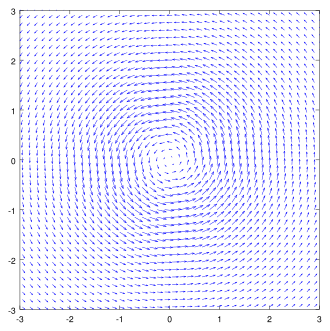Lamb–Oseen vortex
In fluid dynamics, the Lamb–Oseen vortex models a line vortex that decays due to viscosity. This vortex is named after Horace Lamb and Carl Wilhelm Oseen.[1]

The mathematical model for the flow velocity in the circumferential –direction in the Lamb–Oseen vortex is:
with
- = radius,
- = core radius of vortex,
- = viscosity, and
- = circulation contained in the vortex.
The radial velocity is equal to zero.
The associated vorticity distribution[2] in the vortex-filament-direction (here ) can be found with the curl:
An alternative definition is to use the peak tangential velocity of the vortex rather than the total circulation
where is the radius at which is attained, and the number α = 1.25643, see Devenport et al.[3]
The pressure field simply ensures the vortex rotates in the circumferential direction, providing the centripetal force
where ρ is the constant density[4]
References
- ↑ Saffman, P. G.; Ablowitz, Mark J.; J. Hinch, E.; Ockendon, J. R.; Olver, Peter J. (1992). Vortex dynamics. Cambridge: Cambridge University Press. ISBN 0-521-47739-5. p. 253.
- ↑ Wu, J. Z.; Ma, H. Y.; Zhou M. D. (2006). Vorticity and Vortex Dynamics. Berlin: Springer-Verlag. p. 262. ISBN 3-540-29027-3. p. 262.
- ↑ W.J. Devenport; M.C. Rife; S.I. Liapis; G.J. Follin (1996). "The structure and development of a wing-tip vortex". Journal of Fluid Mechanics. 312: 67–106. Bibcode:1996JFM...312...67D. doi:10.1017/S0022112096001929.
- ↑ G.K. Batchelor (1967). An Introduction to Fluid Dynamics. Cambridge University Press.